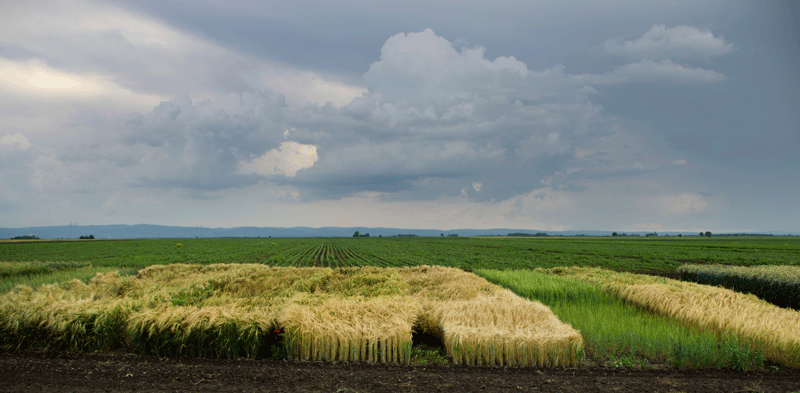Ontario Cereal Crops Committee
RECOMMENDING NEW VARIETIES
IN 1923, CANADA’S original Seeds Act was amended to require varieties be licensed and registered by the minister responsible for agriculture prior to being sold in Canada. This change was implemented because seed sellers in the United States were promoting a wheat variety in Canada which they falsely claimed would yield 100 bushels per acre.

When the legislation took effect, every new variety had to be tested either at an experimental farm or privately before being considered for registration approval by a Committee of Plant Breeders of the Canadian Growers Association.
Changes have been made to the Act since the 1923 amendment, but most varieties still require registration before they can be sold in Canada. And while the variety registration process now falls under the Canadian Food Inspection Agency and Minister of Health, expert recommending committees made up of industry professionals and stakeholders guide the government as to whether or not a variety should be registered and allowed to be sold within Canada.
RECOMMENDATIONS
The Ontario Cereal Crops Committee (OCCC) is the expert recommending body for cereal registration in Ontario, which includes barley, buckwheat, durum, oats, rye, spelt, and wheat. OCCC chair Mark Etienne has been involved with the committee in some capacity since 1981 and has seen the committee and the industry evolve tremendously over the last three decades.
“It used to be that a good 98.5 per cent of the wheat grown in Ontario was white winter wheat,” explains Etienne, who also works as a wheat breeder with Hyland Seeds (a division of Dow AgroSciences).
Etienne says when the recommending committee existed in its earlier forms, it was made up mostly of breeders. Now, it is comprised of a cross-section of experts and is more representative of the overall industry — a change that has brought more choice and opportunities for growers. The OCCC is currently represented by a voting membership of 11 industry organizations, including Grain Farmers of Ontario (see sidebar, page 8).
INDUSTRY-WIDE
“The OCCC represents the whole system and has the flexibility to determine the criteria that are most appropriate for our industry,” says Crosby Devitt, vice chair of the OCCC and vice president of strategic development for Grain Farmers of Ontario. “Grain Farmers of Ontario is at the table to represent our farmers and help set an environment where growers can get the best varieties for success.”
Devitt says the process to have the committee look at a variety can be divided into two main processes: coordinate recommendations for variety registration and coordinate performance trials that provide information to farmers on specific varieties. He explains that, in general, the three criteria that are looked at when considering whether to back a variety for registration are disease resistance, yield, and milling quality.
OCCC?regularly re-evaluates the standards for registration. Recently, a review of the quality and function parameters was done. This included a survey of millers and end users that use Ontario wheat. Feedback showed that protein levels and function were lower than ideal. As a result the OCCC?updated the ideal ranges for protein for new varieties.
The OCCC has also updated how performance trials are conducted. The Committee reviewed a number of projects at Guelph and Ridgetown, and, as a result, made changes to adapt their performance trials to reflect current farm practices. “About 70 per cent of the wheat grown in Ontario is under some form of intensive management, with the use of fungicides and/or fertilizer,” cites Etienne as one example. “We are looking at the possibility of going to all managed trials for spring wheat in 2015, and, if deemed appropriate, providing disease data for spring wheat within nurseries rather than in plots — for greater control and more accurate results.”
PERFORMANCE TESTING
Ellen Sparry is a genetics manager with C&M Seeds and currently fills three roles at the OCCC: performance testing coordinator, winter wheat registration coordinator, and spring wheat registration coordinator. She says the performance testing process is a very cooperative process between both the public and private sectors.
Varieties are typically trial tested at three or four sites throughout the province to see how they perform, with both the required data collected, and the sites themselves, tightly monitored by the OCCC. The collected data is then submitted to the appropriate data coordinator at the OCCC who compiles the data and verifies the data for accuracy, asking follow-up questions as required.
Each January, the committee meets and uses the test data to decide which new varieties they are going to recommend for approval. Sparry estimates, on average, about 10 new varieties of wheat and five of barley and oats are recommended each year. The costs associated with the registering of new lines and cultivars are borne by the sponsor.
Etienne notes that, because the OCCC quality sub-committee is made up of representatives who are directly involved in the Ontario cereals market, they have a good understanding of what varieties will succeed based on agronomics and current market trends.
FUTURE NEEDS
In Ontario, we are at the forefront of identifying and segregating market classes. For example, we have fine-tuned and identified wheat varieties for specific and general purpose grist. “We are able to satisfy both our local and not so local — American — customers with material similar in parameters necessary for the production of their products,” says Etienne. “The miller has more confidence in the crop coming across his scales and is better able to utilize a higher percentage of Ontario-grown wheat in his blends. We are not perfect, but are almost where we need to be.”
One area the OCCC continues to set as a priority is improved disease resistance. “We have been on the forefront of demanding improved tolerance to not only Fusarium head blight (FHB), but also in requiring reduced DON levels in wheat,” notes Etienne. “Ontario has been participating in FHB research for almost 25 years and has truly benefitted and identified lines with improved tolerance to the disease and reduced toxin levels.”
Etienne says the OCCC has always addressed the need for researchers and research in cereals in Ontario and will continue to do so. “Many of our committee members play a key role in the development, production, sale, and end-use of material selected and grown in Ontario. Hopefully, we see the future demands and address them in order to ensure that the best practices, varieties, and options are available to the Ontario farmer and the Industry in the years to come.”
OCCC MEMBERSHIP
The voting membership of the Ontario Cereal Crop Committee consists of one representative of each of the following 11 organizations representing the cereal industry in Ontario:
• Grain Farmers of Ontario
• Oat and Barley Council of Ontario
• Ontario Seed Growers Association
• Canadian Seed Trade Association
• Ontario Soil and Crop Improvement Association
• Ontario Miller’s Association
• Ontario Agri Business Association
• Canadian Grain Commission
• Ontario Ministry of Agriculture, Food and Rural Affairs
• Agriculture and Agri-Food Canada
• University of Guelph
Cereal performance trial reports are available at www.gocereals.ca. The website also features a tool for head-to-head variety comparisons. •







